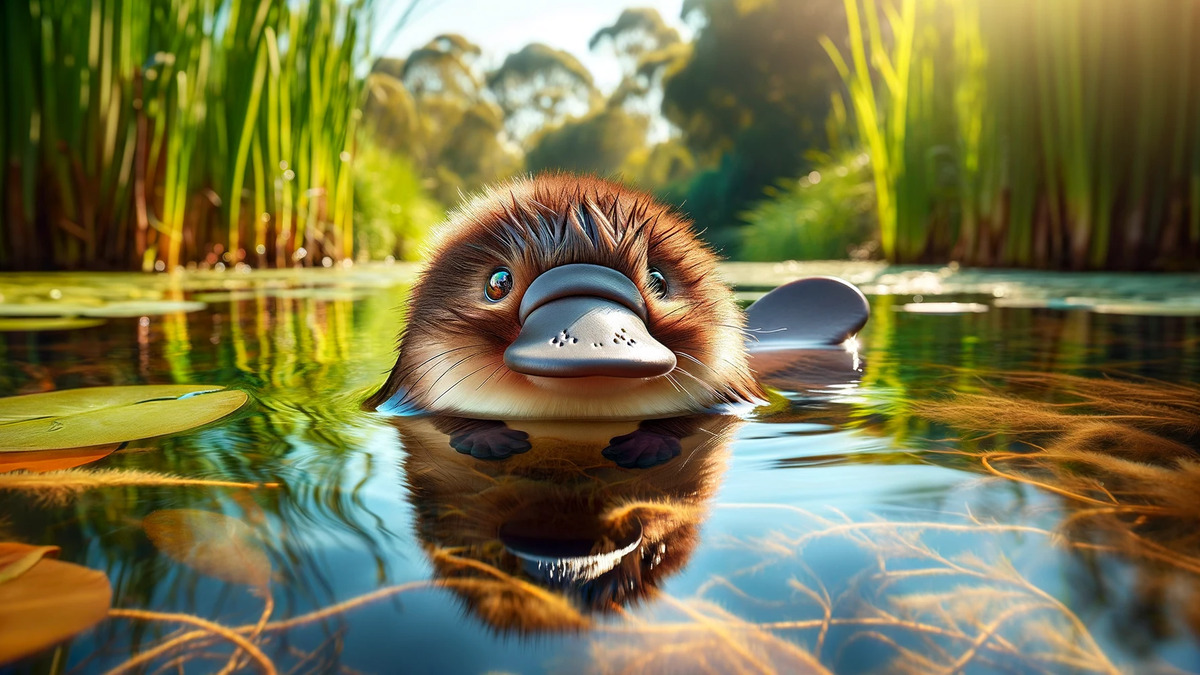Platypuses are specialised animals in Eastern Australia and Tasmania with characteristics between mammals and reptiles. They belong to a small group of mammals, the monotremes, which lay eggs instead of producing living young.
They are unique compared to other unusual mammals such as echidnas (the only mammal belonging to the monotremes). Incidentally, both echidnas and platypuses lay eggs, but platypuses are semi-aquatic.
The female platypus has no teats. It feeds its young by secreting milk through its skin. This is probably the point that underlines their evolutionary links with mammals and reptiles other than eggs.
Their habitat usually includes rivers, streams and lakes where they build burrows. They also feed mainly on aquatic invertebrates.
Many people have seen them swimming on television, but they are actually also good divers. They can remain underwater for many minutes at a time while searching for prey. This is due to their metabolic rate, which is considerably lower than that of many other mammals, allowing them to survive without oxygen for long periods of time.
Incidentally, long ago, European naturalists who first examined the preserved remains of the platypus were completely baffled and some even thought it was a hoax.
The study of the platypus remains an important area of research in several fields, including biochemistry, neurobiology and evolutionary biology. Although not currently considered an endangered species, its habitat is shrinking due to human activities such as land development, pollution and damming of rivers.
A mammal born in eggs, the female produces milk from her skin. Although often forgotten compared to these impacts, males are also distinctive. They have venomous spines on their hind limbs, which is quite rare in mammals. This is used mainly during the breeding season for fighting.
Not at all related, but bees have female venomous spines, and male venomous spines are rare beyond the boundaries of mammals.
Their trademark nose. It stands out for its cute, odd duck-like shape, but it is also high-tech. It has a built-in electroreceptor, which helps the platypus to detect the tiny electric fields generated by its prey.
Mammals that prey in this way are also rare. The platypus is a cute duck-like animal with all these rare features.



コメント